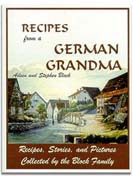German French Onion Soup History
A Special Thank You from Sheila Jacobson for writing this:
The history of this German Beef Onion soup is interesting in that there was a SIZEABLE settlement of German migrants to the area just southeast of Montreal, Canada, way back some 200 years ago, when German immigrants also began to settle in the U.S. in areas that are now known as Pennsylvania, & Ohio.
The area just southeast of Montreal, in Canada, is called “The Eastern Townships”, & it is along the U.S. – Canada border, which borders on the U.S. states of Maine, Vermont (Burlington, Vermont), & Upstate New York (Plattsburg, New York).
There were French Canadian settlers in that same area of The Eastern Townships since the 1500s, & these French Canadian settlers had their own collection of their version of French foods such as Onion Soup, a famous comfort soup even in France which was made legendary in the “Les Halles” market of old Paris, going back to the 1100s.
Although the Germans LOVE their soups, they prefer hearty soups in the winter time with heavy meats with attached beef bones to give added flavor.
French onion soup has NO MEAT in it, & when served, it has a slice of bread or croutons on top with grated cheese which has been broiled till it melts.
So, the early German settlers in the Southeastern part of the Province of Quebec, just southeast of Montreal, began to “Germanize” French Onion soup to make it more suitable to their liking in the winter months, because the winters in the Province of Quebec in Canada are bitterly cold, making it necessary to strengthen oneself with hearty meat soups.
The Germans took the basic French Onion soup recipe, & added generous amounts of beef short ribs (flanken), beef shank with bone in, beef skirt steak, beef hanger steak, beef flank steak, and whatever parts of beef that could be used & would become tender through the long braising process in liquid.
But they never used beef liver in this soup. Beef liver should NEVER be used in this recipe.
So, here’s how to make German Beef Onion Soup: You will need to LOTS and LOTS OF THINLY SLICED, LARGE YELLOW OR SPANISH ONIONS … use as many as you would like, &, remember that onions reduce to a great extent when fried or sautéed, & you can count on getting only about 1 cup of moderately crisp fried sliced onions for every 5 cups of raw sliced onions, depending on the amount of water in the onions.
Fry the sliced onions in oil or beef suet or even lard (which was the preferred fat by the early German settlers, as it was also back in Germany), but make sure to use at least some oil as oil prevents the onions from tasting “greasy”. Also, add a generous amount of salt sprinkled over the onions because the salt will draw out the “water” from the sliced onions, & will prevent the onions from burning easily, & also make the onions tasty & crisp. Do NOT use more than one tablespoon of salt for 25 to 30 cups of sliced onions.
Keep frying the sliced onions till they become moderately crisp & a medium brown in color.
Then, cut up the beef short ribs (flanken) into individual pieces with one bone each attached to a square piece of its own meat. Also, cut up the skirt steak, hanger steak, flank steak, into a maximum of 2-inch square pieces. Do NOT cut up the shanks … leave the beef shanks intact with their bone in & their meat all attached. You DON’T need to salt the raw beef … there’s enough “salt” in the sautéed / fried onions to give flavor to the beef.
Now, brown the cut up pieces of beef and the whole, intact beef shanks in the fried onions … you may remove the browned pieces of beef onto a plate to make more room in the pot for browning the other raw pieces of beef.
When all the pieces of beef have been browned, put them all back into the pot, if they had been removed to a plate to make room in the pot for sautéing the other pieces of beef.
Add either LOW SODIUM beef broth, LOW SODIUM vegetable broth, or a combination of the two LOW SODIUM broths, or just water if you prefer, to about 2 inches above the level of beef in the pot. I think the LOW SODIUM beef broth mixed with the LOW SODIUM vegetable broth gives the best flavor, but, sometimes, my husband & I prefer to have only LOW SODIUM beef broth in the soup, & no other broth or even water.
Now, simmer the “soup” for a few hours till the meat falls off the bones, & the beef marrow has fallen out of the center of the beef shank bone.
You may eat the soup at this point, it’s ready to serve.
But I have found that this soup is best served the next day after it has been sitting in the fridge or in a very cold place (such as your back porch) in the bitter cold winter months, so that the “fat” will come to the top, & harden, so it can be easily “lifted” out, or spooned off, leaving behind an almost fat-free delicious broth with tasty fried & boiled onions with tender & flavorful boiled beef pieces in it.
|














